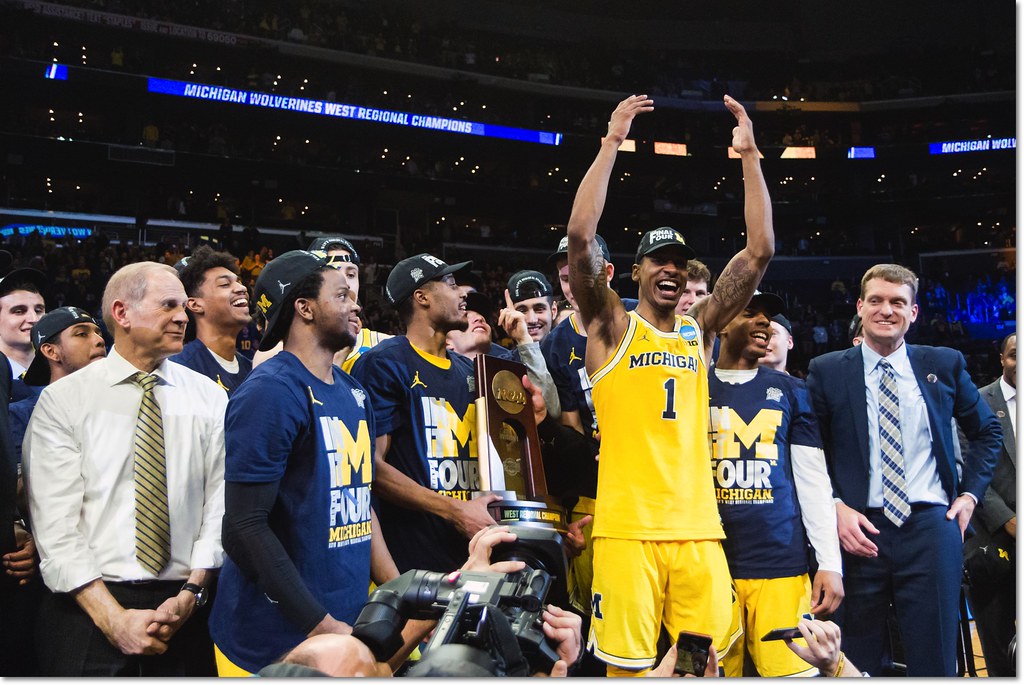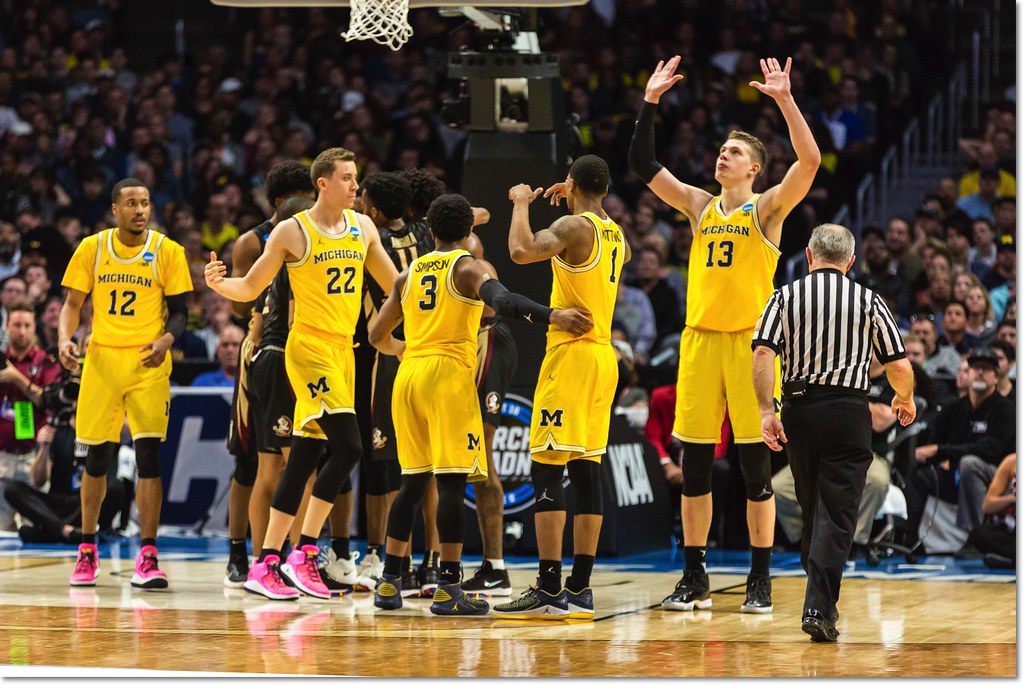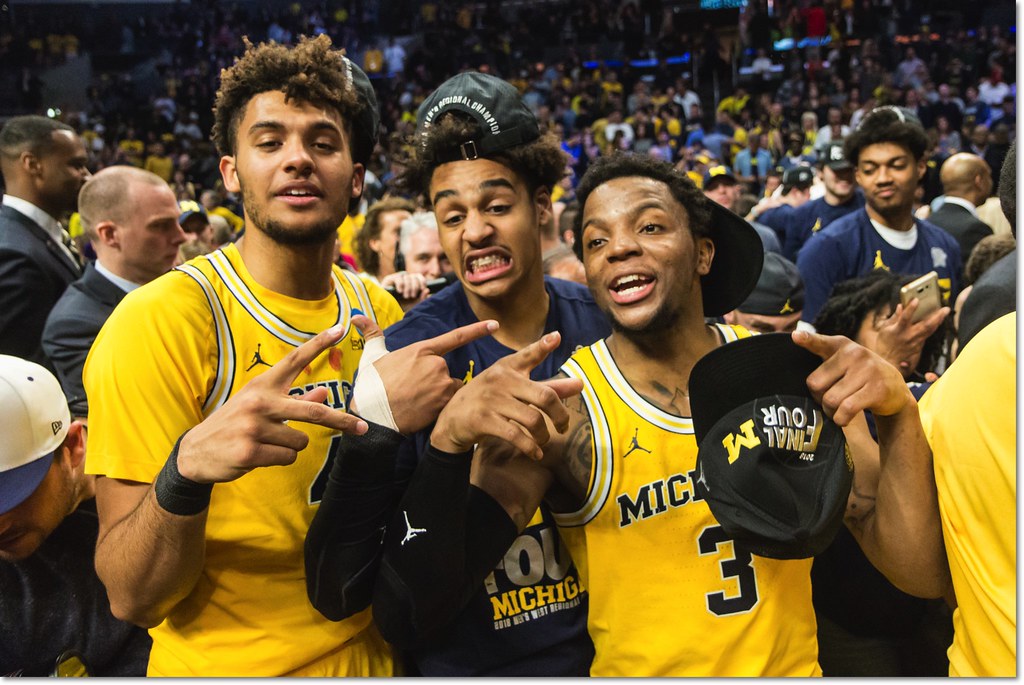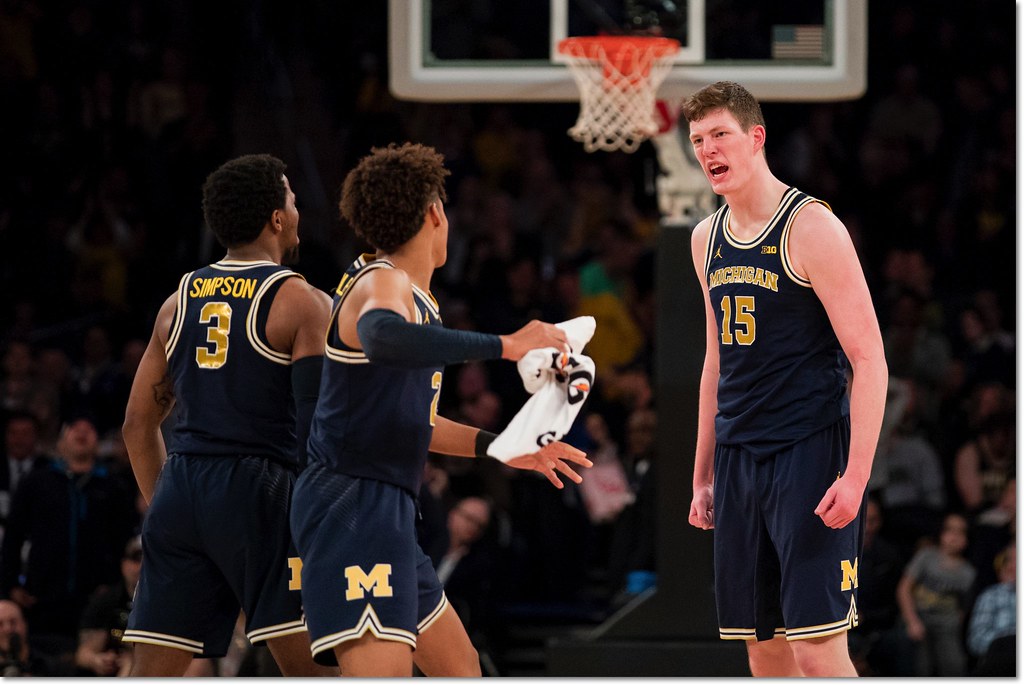john beilein is a genius seriously

Previously: Part One
After looking at Michigan's stellar pick-and-roll production and how they do it last week, I dove deeper into Synergy's database to try to put this year's team in a historical context. At first I was just looking at other lead ballhandlers, then I was putting tables for every season together, then I realized I needed to add the screeners to the equation and look at how each team varied their P&R attack to do this right.
So what was going to be the second half of this series is now the second of either three or four parts. I'm trying not to make these too long to digest. These posts are going to be heavy on Synergy's stats, so I want to make a few notes before going any further.
While Synergy uses the terminology "points per possession" to describe how they measure production, that's very misleading when you're used to looking at KenPom. I'm switching over to describing Synergy stats as "points per play." The distinction is described in this useful Cleaning The Glass post:
CTG distinguishes between possessions and plays, and this distinction is important when diving into context information. A possession starts when a team gets the ball and ends when they lose it. A play ends when the team attempts a shot, goes to the foul line, or turns the ball over. If a team gets an offensive rebound, that results in a continuation of a possession but a new play. So a possession can have multiple plays.
Play contexts are per-play, not per-possession. For example, a team might come down in transition and miss a shot, get the offensive rebound, kick it out, and run a halfcourt set. Then might miss that shot but get a tip in to score and end the possession. That was all one possession, but three different plays and three different contexts: the first shot was in transition, the second in the halfcourt, and the third was a putback.
Because offensive rebounds start a new "play" within a possession, points per play are inherently going to be lower than points per possession. To help contextualize, I've included each player's national percentile rank for that season along with their stats.
For ballhandlers, "own offense" includes plays that finish with a field goal attempt, shooting foul, or turnover. "Passes" measure the result of shots that come as a direct result of the ballhandler's pass out of the pick-and-roll. "Keep percentage" is a stat I added myself that simply measures the percentage of a time the ballhandler uses his own offense instead of recording a passing play—Michigan has had players arrive at similar efficiency despite sporting very different styles.
an enjoyable pick-and-pop example
For screeners, you mostly just need to know the difference between popping, rolling, and slipping a screen:
- Popping: setting the screen and then stepping out (usually to the three-point line) for what's almost always a spot-up shot. Occasionally a more versatile big man will drive off a pop. Think Moe Wagner.
- Rolling: setting the screen and then going to the basket in the hopes of getting a layup/dunk. Think Jordan Morgan.
- Slipping: faking the screen before running to a predesignated spot—usually the rim, sometimes spotting up if it's a Wagner-type or perimeter player—as a changeup to keep defenses from overplaying the ballhandler.
As a general rule, points per play are going to higher when the screener finishes the play than the ballhander because of the nature of the pick-and-roll. A pass is usually going to be thrown to an open man when the play works; while the ballhandler could take a shot because he got open himself, he also usually has to finish the play if it's well defended.
Consider the degree of difficulty of Zavier Simpson's or Cassius Winston's shots; it's hard to be a really efficient scorer off the pick-and-roll. Morgan, while a great roll man, often just had to catch the ball and finish an uncontested shot at the rim. Most of Wagner's pick-and-pop threes went up without a real shot contest. This makes sense: there's little reason to pass the ball to your big man if he isn't open. Teams also often default to a quick screen in late clock situations, which tends to create more difficult shots the ballhandler has little choice but to take.
The other thing to note in the screener stats: under number of plays in each category, "%" shows the percentage of the time each player popped, rolled, or slipped out of their overall screener plays used. The "%ile" under points points play in each category, however, measures percentile national rank. I realize this is a little confusing but I couldn't come up with a better way than Synergy in this case.
With that out of the way, let's dive in.
[Hit THE JUMP for a year-by-year history of Michigan's pick-and-roll offense and what we can learn from it.]

Couple of rookies. [Photo: Marc-Gregor Campredon]
Remember that post from earlier this week in which a Miami beat writer opined that the Heat could potentially lose Duncan Robinson if they didn't lock him up to a contract? Miami, evidently, did not want to take that chance heading into today's final day of round robin play in Summer League. John Beilein and staff, you are wizards.
The Miami Heat and Duncan Robinson (Michigan) have agreed to a one-year, 2-way deal, league sources told The Athletic. Robinson, who attended Williams Ephs before Michigan, will have the opportunity to become the first D-III player since Devean George to play in the NBA.
— Michael Scotto (@MikeAScotto) July 10, 2018
A two-way deal is the same type of contract Derrick Walton signed with the Heat last year. Each team has two spots for two-way players, who mostly play in the G League (formerly D League) and can spend up to 45 days in a season with the big club. (The Heat seem intent on bringing back Walton, too.)
Robinson is averaging over 12 points a game for the Heat's Summer League team and shooting nearly 60% from the field. His best performance thus far was a 19-point outburst against Moe Wagner's Los Angeles Lakers:
Robinson's journey from unrecruited kid from Exeter Academy to D-III All-American to Michigan Wolverine to Big Ten Sixth Man of the Year has been well documented. This adds another remarkable chapter to the story. As Scotto mentioned, Robinson could become the first former D-III player to make the NBA since Devean George, the former Augsburg University standout who played in the league from 1999-2010 and contributed to three title-winning Lakers squads.
 SPONSOR NOTE. HomeSure Lending is once again sponsoring our NCAA Tournament coverage this year, and once again that is going rather well. I'm not saying Michigan's second run to the FINAL FOUR is due to this great partnership of sports blog and home-financing expert; I'm not saying it isn't, either. I certainly don't want to test this theory. If you're looking at buying a house this spring/summer you should talk to him soon.
SPONSOR NOTE. HomeSure Lending is once again sponsoring our NCAA Tournament coverage this year, and once again that is going rather well. I'm not saying Michigan's second run to the FINAL FOUR is due to this great partnership of sports blog and home-financing expert; I'm not saying it isn't, either. I certainly don't want to test this theory. If you're looking at buying a house this spring/summer you should talk to him soon.
ICYMI. Tuesday's mailbag covered Moe Wagner's impact on opponent strategy, the John Beilein inbounding myth, and an interesting hypothetical about Beilein as an NBA coach. Wednesday's covered Loyola matchups, small ball, Jon Teske, and why Z keeps getting robbed (off the court). Brian posted the Loyola Chicago preview yesterday.

Up, then down, then very up. [Patrick Barron]
I was going to write another mailbag today but I'm past the point of rational thought. I should've seen this coming. This team, all season, has bucked expectation seemingly every time they settled into a pattern.
Heading into the season, this was going to be Moe Wagner's team. Or maybe Jaaron Simmons' if his MAC stardom translated, which we quickly learned did not. Perhaps Charles Matthews would fulfill his obvious potential and run the show, which appeared to be the case in November. Then he reverted to Turnover Matthews, the player we belatedly learned had been present for much of his mandated redshirt year, and we hoped he'd give up on being the centerpiece. He did, until the team needed a hard-driving centerpiece in the NCAA Tournament and he won West Region MVP.
Zavier Simpson started the first four games before coming off the bench in favor of Eli Brooks for the next 12. I wrote this on December 6th when exploring potential season outcomes:
For as good as Darius Morris was a sophomore, he simply wasn't ready for a starter's role as a freshman. Despite major differences in stature, Morris's statistical profile wasn't too different from Zavier Simpson's: very low usage, higher turnover rate than assist rate, awful outside shooting. (I know Simpson has shot okay from three this year but opponents are leaving him all alone out there and it's killing spacing.) Morris needed a full year before he was ready to run an efficient offense; if this year's PGs need a similar timetable, Michigan is probably missing the tournament.
I concluded that Brooks would do enough to help the Wolverines make the tourney as a bubble team. My personal Zavier Simpson mea culpa tour started eight days later.

The core. [Barron]
Duncan Robinson, a senior captain, had his starting job taken by a younger player for the second consecutive season, this time while mired in a shockingly uncharacteristic shooting funk. He continued to be a liability on defense until, suddenly, he no longer was that at all, through some combination of dogged work paying off and Luke Yaklich's tactical wizardry. While he stayed out of the starting lineup, he's one of the best five with commensurate playing time, and the team is evidently unbeatable when he scores six or more points.
The other returning senior, Muhammad-Ali Abdur-Rahkman, looked like the effective role player he'd pretty much always been for much of the year. When Michigan needed someone to grab control as Matthews struggled, however, he took the wheel.

Rolling with it. [Barron]
Talented freshmen Isaiah Livers and Jordan Poole had to deal with the considerable learning curve of John Beilein's system plus a newfound emphasis on defensive fundamentals that'd make it much harder for the average freshman to make a quick impact. Both marinated for a while before the blowout loss at North Carolina provided them with extended minutes against real competition. They settled into roles; those roles changed; they adapted, often by the day. Poole went from playing season-saving microwave against Houston to two statless minutes against Florida State.
Jon Teske earned the nickname "Big Sleep" as a freshman in large part due to how completely out-to-lunch he looked on the court. Some offseason chatter had him losing ground to a different big, Austin "Big Country" Davis, who'd redshirted behind Teske last year. Teske held off Davis and had a strong start to the season, using his size to overwhelm lesser opponents, before his production faded when conference play began in earnest. Sometime around Valentine's Day, "Big Nasty" awoke, and this big guy screams at Isaac Haas after dunking in his grill.

Hello, Big Nasty. [Marc-Gregor Campredon]
The last time Michigan made it here, the circumstances could hardly have been more different. While the 2012-13 team had lost Stu Douglass and Zack Novak from the starting lineup, every other contributor returned save Evan Smotrycz. The team had a clear leader in Trey Burke, a clear second option in Tim Hardaway Jr., an experienced big man in Jordan Morgan, and a group of prodigious freshmen that quickly settled into well-defined roles. The only significant change in how the team functioned throughout the season was Mitch McGary's postseason breakout, which wasn't too difficult to see coming.
This team isn't like that, not one bit. They play great defense no matter who is on the floor and squeeze enough offense out of their collection of misfit toys to grind out wins. Occasionally it all comes together and they blow a team to bits; more often, it's a matter of waiting to see how the game will dictate which player ultimately takes the lead. Not many teams make it this far in such fashion. For your college-to-pro comparison, you don't need to look far: hello, 2003-04 Detroit Pistons.
Will it end the same way? We'll see. Which player will take the lead? Who knows. Will it matter? I have no idea.
Neither does John Beilein, I'm guessing, but he has a much better plan of how to handle that. If you need me, I'll be curled up in a ball of anticipation.
2